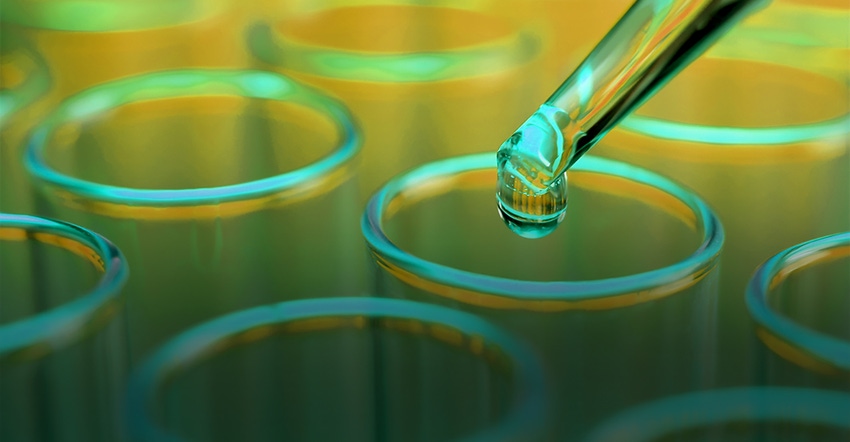Immunogenicity is an important but little understood differentiator among vaccines. In simple terms, it can be thought of as a vaccine’s “horsepower.”
August 3, 2022

Sponsored Content
Across both established and emerging strains, the ability to control porcine reproductive and respiratory syndrome virus (PRRSV) rests on two main pillars: maximizing immunity and minimizing exposure and transmission. Both are accomplished through a combination of biosecurity and vaccine-derived immunity.
But not all vaccine-derived immunity is created equal. Immunogenicity, or the ability of a vaccine to provoke an immune response, is an important but little-understood differentiator among vaccines. In simple terms, immunogenicity can be thought of as a vaccine’s “horsepower.”
‘Horsepower’ Explained
There’s a balancing act that all vaccines must perform to help a pig build up sufficient vaccine-derived immunity, which helps them mitigate the consequences of a natural infection.
A vaccine with too little immunogenicity prohibits a pig from developing the level of immunity its body needs to defend against natural infection. But the right level of immunogenicity can help generate a robust immune response.
With this balancing act in mind, the “horsepower” analogy becomes clear. A vehicle with too little horsepower means you’re stuck in the slow lane and don’t have the torque you need to make it up steep hills. A vehicle with more horsepower allows it to perform better, get to its destination faster and manage challenging driving conditions like hills or poor weather.
Study Sheds Light on Immunogenicity Levels
A recent study investigating the performance of Ingelvac PRRS® MLV and a competitor vaccine against a heterologous PRRSV 1-7-4 challenge demonstrates the dynamic at play with vaccine immunogenicity.1
On study day 0, 108 PRRS-naïve, 3-week-old pigs were randomized into three groups, and intramuscularly administered INGELVAC PRRS MLV or the competitor vaccine according to their label directions, or given a placebo.
As seen in Table 1, during the post-vaccination, pre-challenge phase of the study, there were no significant differences in average daily weight gain (ADWG) between either of the vaccinated groups or the placebo group.1 Following challenge on day 27, however, the horsepower of the two vaccines was truly put to the test. In this critical phase of the study, pigs vaccinated with INGLEVAC PRRS MLV had significantly higher ADWG than the competitor and the placebo groups, demonstrating the vaccine’s ability to generate robust immunity, mitigate the consequences of infection, and improve pig performance.1
Table 1: Pre- and Post-Challenge Average Daily Weight Gain (Lbs.)1
Treatment | Pre-Challenge ADWG Days 0–27 (95% CI) | Post-Challenge ADWG Days 27–42 (95% CI) |
INGELVAC PRRS MLV | 1.16a | 1.41a |
Competitor Vaccine | 1.06a | 1.10b |
Placebo | 1.14a | 0.84c |
*Different letters indicate significant (P ≤ 0.05) differences.
Viremia Tells an Even More Complete Story
While a critical metric for producers, ADWG is not the only way to illustrate differences in vaccine horsepower. Post-challenge viremia is a metric often used in vaccine comparison studies, but its role in decreasing pig performance is not well understood, and as a result is sometimes overlooked.
Simply put, viremia is the presence of a virus in the blood. It plays a critical role in the development of clinical signs, fever, pneumonia and overall poor performance. High levels of post-challenge viremia usually mean more virus in the blood, which often translates to poorer health and performance.
Comparing the rate at which viremia increases and decreases, and cross-referencing that against other metrics like ADWG, can tell a more complete story of what’s happening inside a pig than looking at any of these metrics on their own.
Viremia is commonly quantified in CT values from polymerase chain reaction (PCR) testing. Lower CT values indicate higher levels of viremia, and vice versa. As shown in Figure 1, between day 0–27, pigs in the vaccine groups each had some level of viremia stemming from the vaccine administration on day 0 as their bodies worked to “mount an immune response,” but as previously stated, not enough to significantly impact ADWG.1
Figure 1: PCR CT Results1

Following challenge on day 27, the placebo group, as expected, had the lowest CT values, indicating the highest level of viremia among the three groups. The competitor vaccine had the next-highest viremia levels, followed by INGELVAC PRRS MLV with the lowest levels of viremia.1
These differences, both in viremia and ADWG, are concrete metrics that demonstrate INGELVAC PRRS MLV provides an optimal level of immunogenicity, which generates strong vaccine-derived immunity and helps mitigate the consequences of infection.1 So, the next time you’re embarking on the long haul that is PRRSV protection, ask yourself, “Do I have enough horsepower to get me there?”
Talk to your Boehringer Ingelheim representative or see the full study results to learn more.
References
1 Philips R, Haiwick G, Whiteman D, et al. Comparative efficacy of Ingelvac PRRS® MLV against a heterologous PRRSV 1-7-4 challenge. In Proceedings. Allen D. Leman Swine Conf. 2020.
INGELVAC PRRS® MLV is a registered trademark of Boehringer Ingelheim Vetmedica GmbH, used under license. ©2022 Boehringer Ingelheim Animal Health USA Inc., Duluth, GA. All Rights Reserved. US-POR-0118-2022
About the Author(s)
You May Also Like



